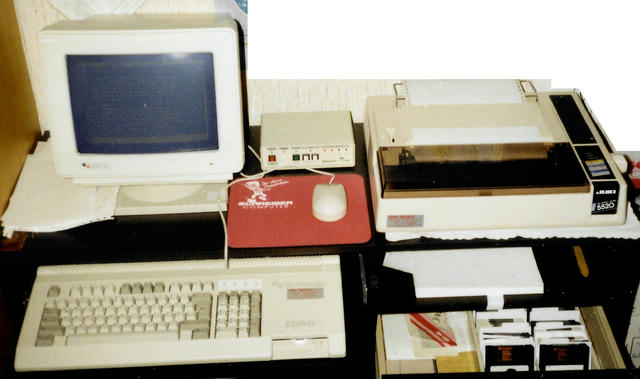Upskill Like It’s 1989: What the Berlin Wall Teaches Us About AI

Back in the late 80s, I was a computer-enthusiastic teenager helping my mother, who was leading the German consulate in Rome at the time. I still remember teaching her secretaries how to use PCs for word processing instead of their trusty typewriters. I guess that was my very first gig as tech support.
Little did I know I was witnessing a pivotal moment in workplace history—one that’s now rhyming with today’s AI revolution.
1989: When Computer Literacy Became Everything
In 1989, something magical happened: the Berlin Wall opened, starting the process of peaceful German reunification. But this historic moment created an unexpected challenge that would define careers for decades.
Millions of former East German workers suddenly found themselves competing in a reunified job market. While the GDR’s public education system was excellent and Eastern German workers were at least as qualified on paper as their Western counterparts, there was one critical difference: computers in the workplace.
The 80s had seen the rise of home computing and widespread introduction of PCs at work. Western Germany rapidly embraced this shift, while Eastern Germany fell behind. After 1989, computer literacy became a make-or-break job skill.
Those millions of well-educated but computer-illiterate ex-GDR job seekers faced a tough choice: invest time and effort in the public retraining programs that were accepting hundreds of thousands of participants annually, or dismiss this “computer thing” as a fad and try to get by without it.
The rest is history, as they say. I’ve seen quite a few cases of people dramatically falling behind in their careers—and life in general—as a result of missing out on tech literacy skills.
2025: The AI Divide Is Here
Fast forward to today, and the parallels are striking. We’re in the middle of another major tech disruption, yet so many people choose to underestimate, dismiss, or actively ignore what’s happening.
There’s a new breed of GenAI Application Engineers who can build more-powerful applications faster than was possible before, thanks to generative AI. Individuals who can play this role are highly sought-after by businesses, but the job description is still coming into focus.
While this sounds like a no-brainer to tech enthusiasts like myself, many others remain indifferent, if not dismissive. Just recently, I heard a high-ranking executive at a tech company say: “I’m probably not the best example for using AI. My colleagues keep recommending me some tools, but I haven’t checked them out yet.”
Mind you, this was in 2025—more than two years after ChatGPT launched.
Sound familiar? It’s the same pattern: new technology emerges, some embrace it, others wait and see, and still others actively resist.
The Choice: Learn from History
Here’s what struck me when talking to my wife (she’s from Dresden, in the former GDR) about the job struggles of Eastern Germans in the 90s: we’re living through the exact same moment of choice.
But here’s the reassuring part: we’ve navigated this before.
The people who thrived during the computer revolution weren’t necessarily the smartest or most technical—they were the ones who recognized the pattern early and acted on it. They didn’t panic; they adapted methodically.
Today’s AI moment feels overwhelming because we’re in the middle of it. But step back, and it’s just another chapter in the long story of humans adapting to new tools. The anxiety you feel? Your parents felt it about computers. Your grandparents felt it about cars replacing horses.
The difference this time is: we have the playbook. We know how this story goes. We just need to decide which roles we want to play.
Speaking of history repeating—or should I say, rhyming—this song captures the spirit of what we’re living through perfectly:

Sometimes the best way to understand the present is through the lens of the past. Set to a good beat.
Cover image credit: Schneider EuroPC mit Monochrom-Monitor MM12 und Drucker Juki 5520 9-Nadel Farbdrucker by Wikimedia Commons author “Steffen2”, used under the CC BY-SA 4.0 license. Image is unmodified, except for size and format changes for optimized web delivery.
